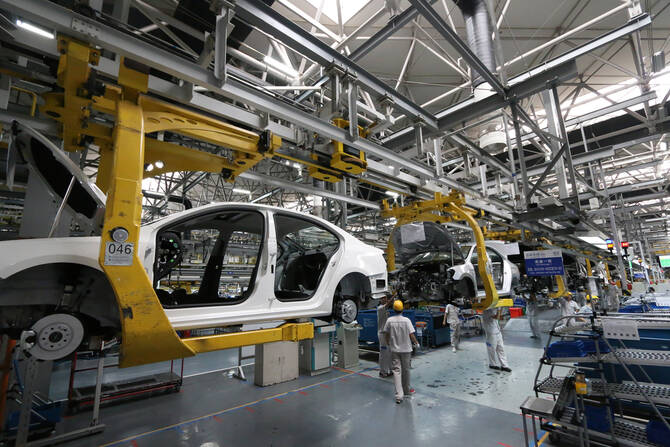
- ARAB NEWS
- 31 Jul 2025

RIYADH: Chinese automotive brands are expected to achieve a market share of 34 percent in the Middle East and Africa region by 2030, marking a rise from 10 percent in 2024, according to an analysis.
In its latest report, global consulting firm AlixPartners stated that the MEA region will hold the highest share of vehicles produced by the Asian country outside of China, Russia, and Belarus by the end of the decade.
Alessandro Massaglia, partner and managing director at AlixPartners, said: “Chinese car manufacturers are rapidly gaining traction in the Middle East, positioning the region as a critical growth engine for their global exports.”
According to Massaglia, the technical prowess of Chinese vehicles and competitive pricing are two major factors attracting buyers in the Middle East.
“Customers appreciate the competitive pricing and high technology content of Chinese vehicles. These brands are steadily gaining ground on established players, a trend expected to accelerate with the gradual shift toward electric vehicles,” he added.
Countries including Saudi Arabia have already set clear targets for EV adoption, with the Kingdom aiming to have 30 percent of all vehicles in Riyadh electric by the end of this decade as part of its Vision 2030 initiative.
The report noted that the Middle East region is set to play an increasingly strategic role in the global growth ambitions of Chinese vehicle brands.
“The region’s appetite for innovation, coupled with its investments in future mobility and sustainability, positions it as a key destination for next-generation automotive solutions,” said AlixPartners.
It added: “The growing alignment between Chinese brands’ offerings and Middle Eastern market needs is expected to drive deeper partnerships, technology adoption, and competitive intensity across the automotive landscape in the coming years.”
Middle East growth
According to AlixPartners, the Middle East and Russia emerged as the most important markets for Chinese exports in 2024, surpassing North America and Europe in volume for the first time.
“This shift comes as China continues to flex its muscles in the global automotive-export market, even amid the ongoing global tariff storm gripping the industry,” said AlixPartners.
The global automotive industry has faced major upheaval since early April, after US President Donald Trump imposed a 145 percent tariff on Chinese imports — the highest so far in the trade dispute between the two countries.
According to the report, China’s exports globally rose by 23 percent year on year to reach 6.4 million passenger vehicles in 2024.
The analysis noted that this growth is expected to moderate to 40 percent in 2025 as tariffs ripple through the market.
Russia and the Middle East together accounted for 35 percent of China-origin vehicle exports in 2024, surpassing the combined shipments to Europe and North America for the first time.
“China’s car sales to Russia and Belarus have more than doubled over the past five years, insulating it in part from the volatility of tariffs,” said Andrew Bergbaum, global leader of the automotive and industrial practice at AlixPartners.
The report also forecasted that Chinese brands will account for 30 percent of the global automotive market by 2030, up from 21 percent in 2024, primarily driven by strong gains in emerging markets.
Impact of tariffs

According to AlixPartners, tariffs issued by the US and other countries will have a muted impact on the Chinese automotive industry.
“Although recent tariffs from the US and other countries will increase the cost of China’s vehicle and auto components exports by about 24 percent, or $46 billion, this represents only about 3.8 percent of China’s total auto-industry production value,” said the consulting firm.
Growth in the Chinese automotive industry will also be supported by domestic demand, which is expected to grow by 4 percent in 2025, reaching 26.8 million units.
The report highlighted that domestic growth in China is primarily driven by the rapid adoption of EVs, increasingly featuring intelligent-vehicle technologies such as autonomous-driving systems.
AlixPartners projected that EV sales in China will account for 54 percent of the domestic market in 2025.
Highlighting innovation in Chinese vehicles, the report noted that Advanced Driving Assistance Systems, or ADAS, Level 2 and above were included in nearly 60 percent of passenger vehicle sales in China in 2024, compared to less than 40 percent in the US.
ADAS refers to electronic technologies used in vehicles to enhance safety and driving comfort.
As Chinese automakers strengthen their presence in the Middle East, driven by competitive pricing, technology adoption, and evolving market demand, continued growth is expected in the years ahead.